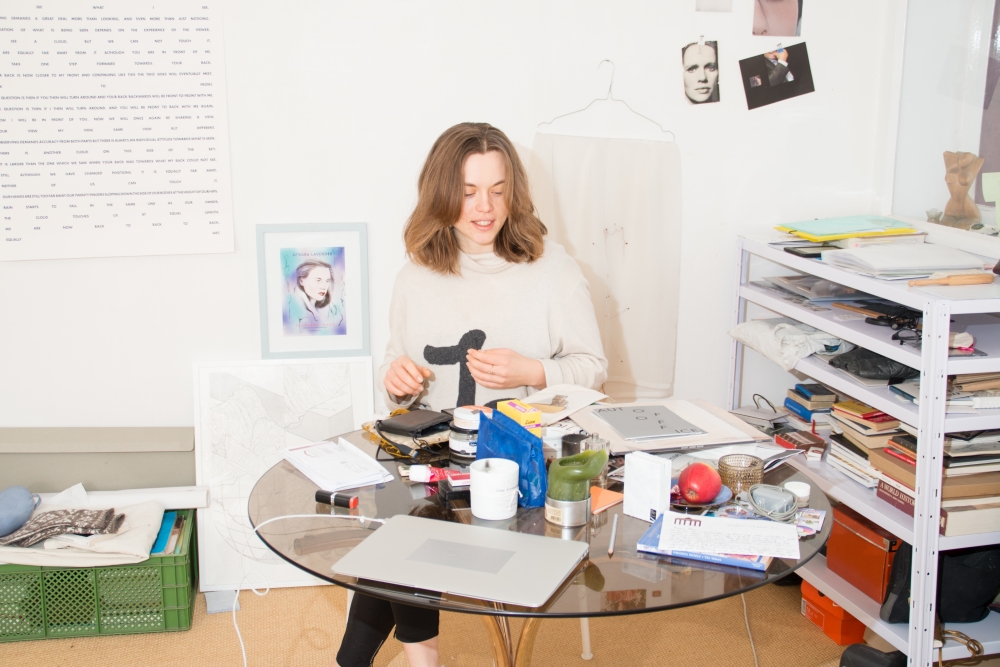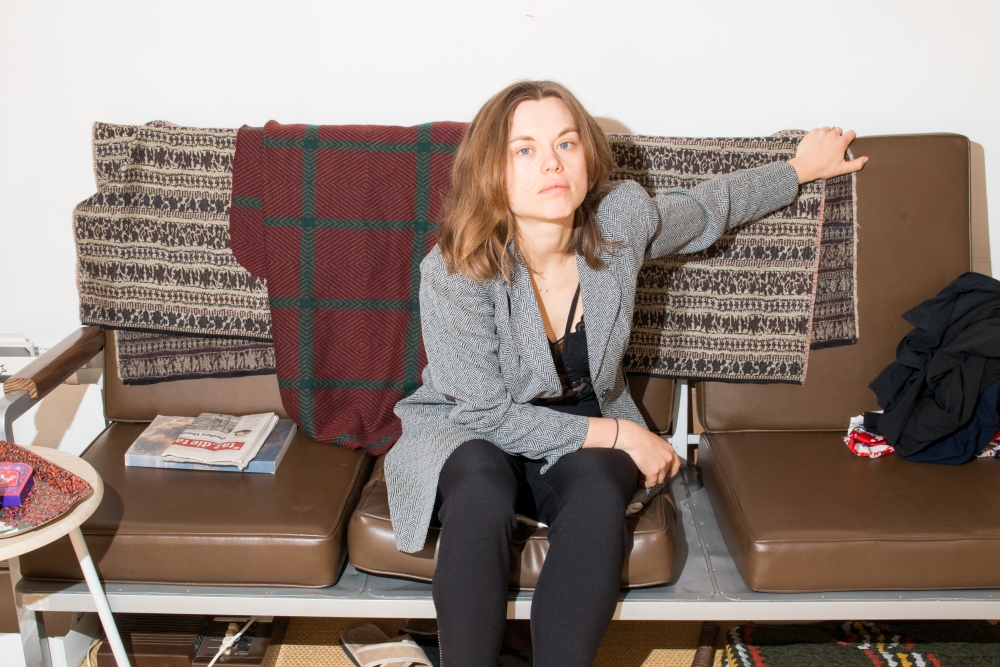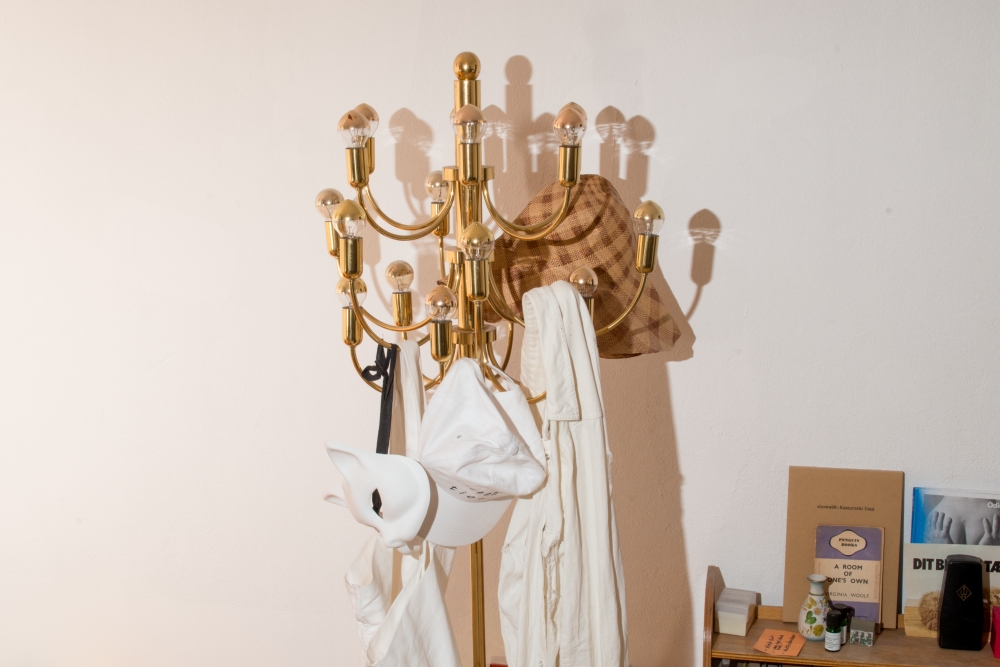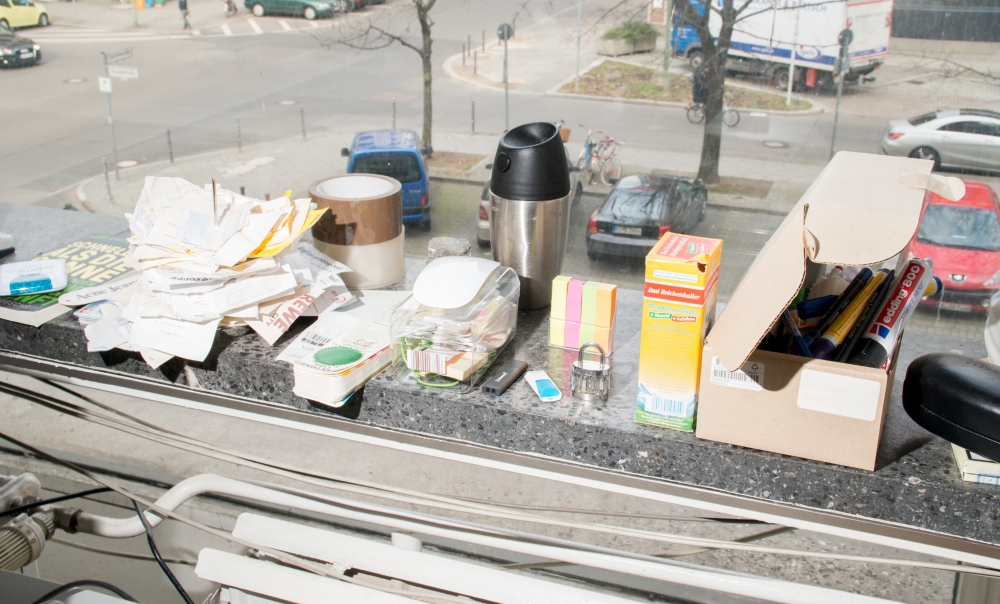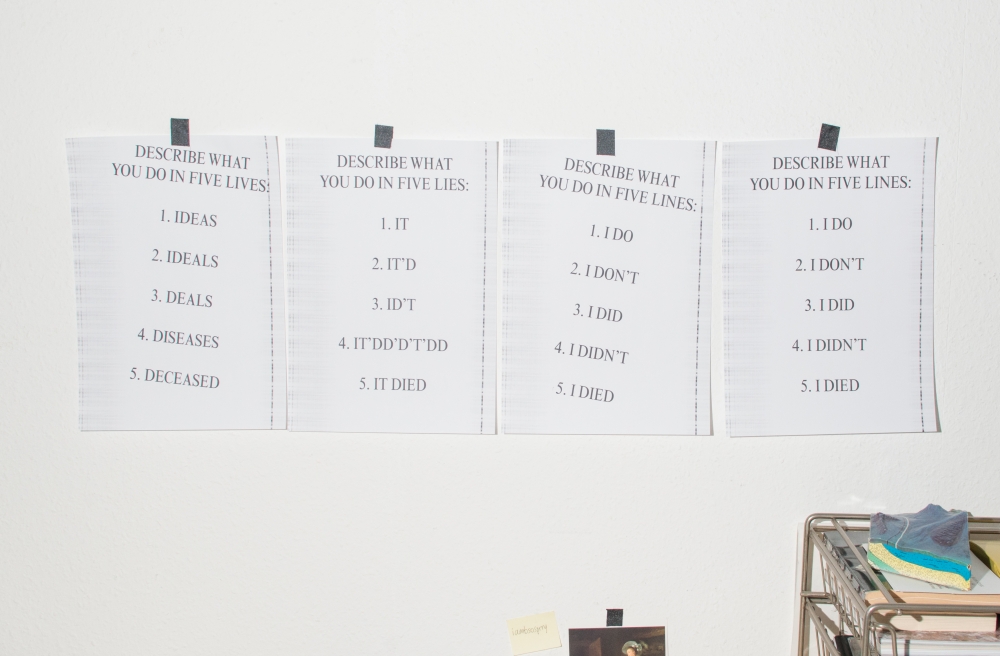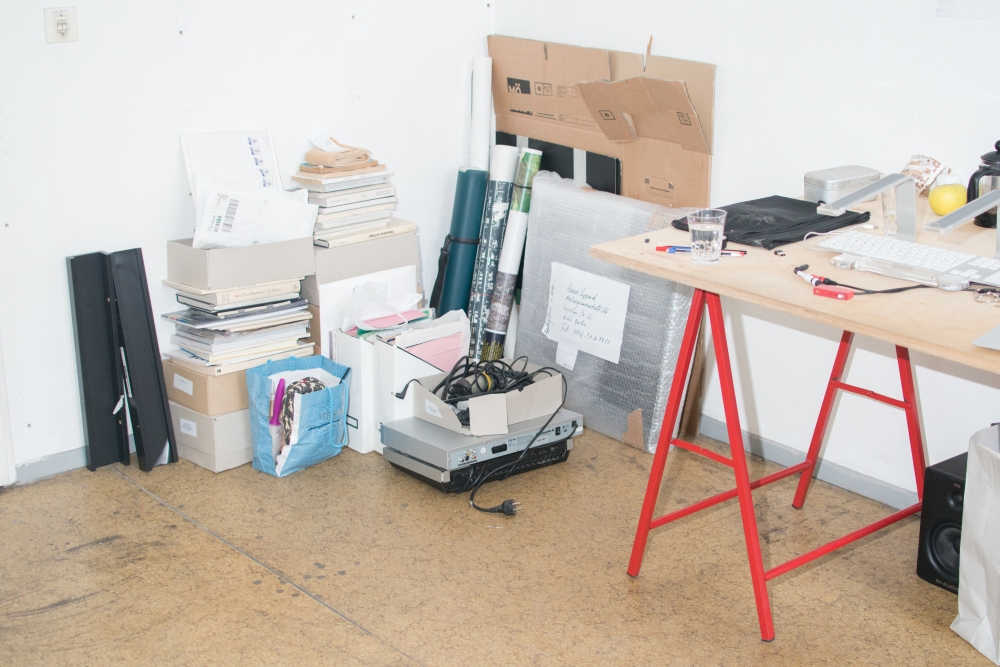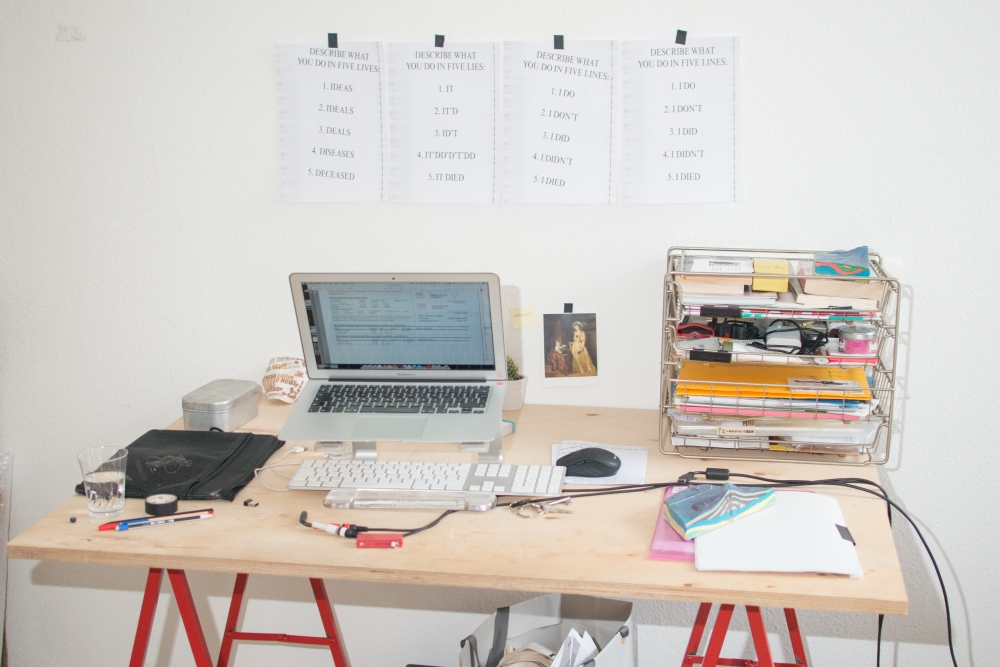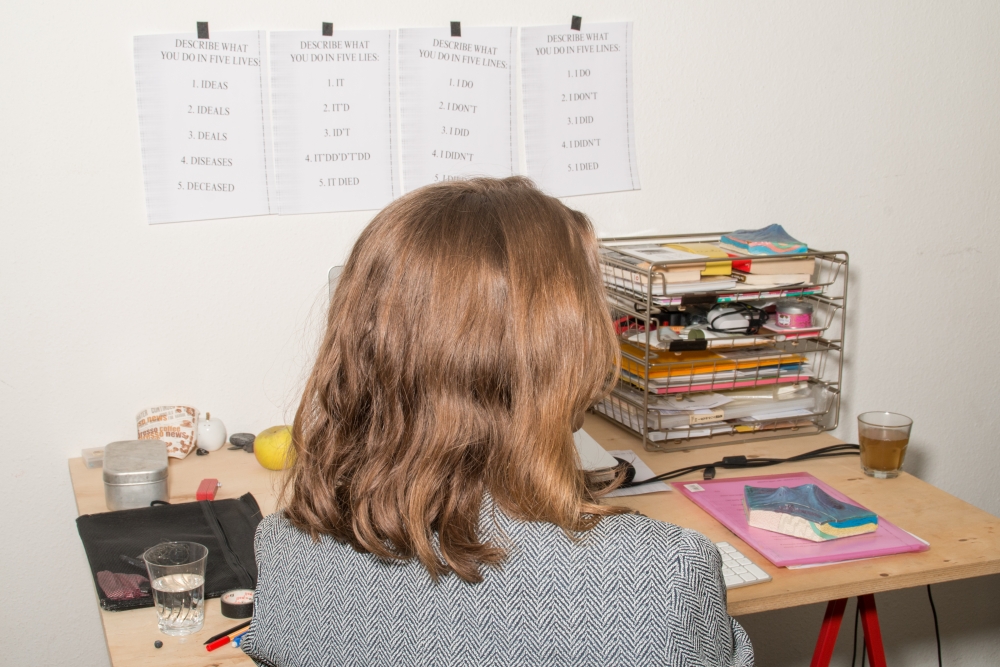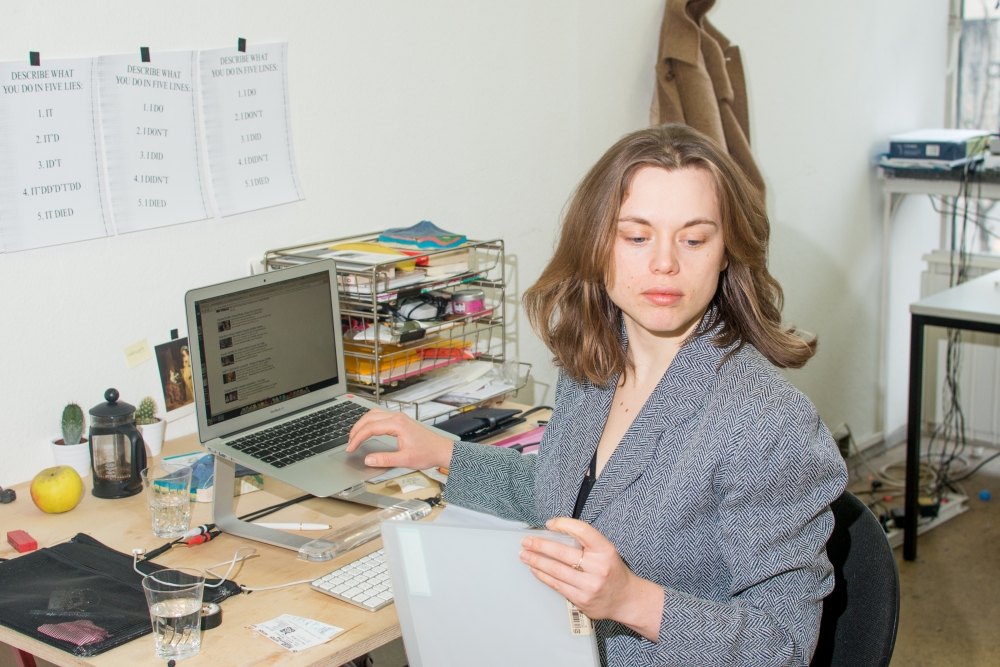Hanne Lippard and Inger Wold Lund both work with words. Lund is a writer who uses both the written format and oral narration in telling her usually short stories written in both English and Norwegian, which includes Leaving Leaving Behind Behind published via Ugly Duckling Presse and Ingenting skjedde published by Flamme Forlag. Lippard is an artist who explores voice as an artistic medium. She has a background in graphic design, speaks several languages, and works in performance, short film, sound and installations.

The following conversation, written by Lund was originally published in Norwegian in Billedkunst in March of 2016. Published in English in advance of Lippard’s next show, Flesh, at Berlin’s KW Institut, opening January 20.
Hanne Lippard and I met at Berlin’s Hauptbahnhof train station an early morning in February of 2016. At that time we had been friends for a year or two, but everyone assumed we had known each other longer, both being Norwegian artists in Berlin. This morning I was travelling with her to Leipzig, a little more than an hour southeast of Berlin, to do an interview for a Norwegian journal. She was going there to install an exhibition at Galerie für Zeitgenössische Kunst (GfZK). Earlier that same year she had won Ars Viva, a prestigious prize awarded by the German cultural industry, and the show in Leipzig was the second stop of a tour with three exhibitions by the winning artists.
I had waited some minutes by the tracks when Hanne came towards me. Behind her she was pulling a well-used suitcase. She told me that she had arrived from Zürich the previous night. The plane had been delayed, and she ended up going straight from the airport to a meeting. I asked her if it hadn’t been Sunday, and she confirmed.
Hanne Lippard: Now it is Monday morning.
We both bought coffees before boarding the train.
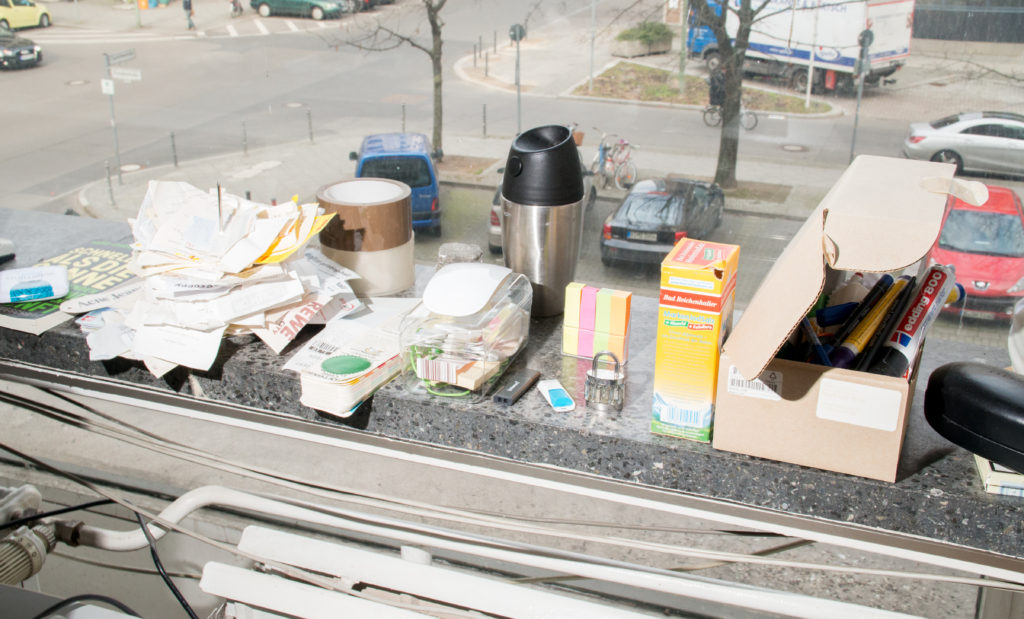
During the next two weeks Hanne would go on to have solo exhibitions at Galerie Tobias Naehring in Leipzig and at Kurator / alte Fabrik on the outskirts of Zürich. Later in the month she was to perform at Royal College of Art in London. In addition to this she was participating in the already mentioned exhibition at GfZK, where she showed new work in both of the two large rooms she had at her disposal.
HL: There are rules for what it is easy to say. I am interested in an extremely exaggerated positivity — something I see as a result of a negative tendency. There is an immigrant crisis in Europe. The glaciers will be gone within the next 10 years. Nestlé exploits the world’s water resources. At the same time, the critical voices are thwarted by a mantra-esque: ‘It’s okay, if the only thing you did today was to breathe.’ My work is about finding a balance between language and some sort of tone, or underlying rhythm, and the fact that language actually does convey information or meaning. When you are surrounded by sayings like ‘from here on it can only get better,’ or bags of Yogi Tea saying ‘empty yourself and be filled by the universe,’ someone has to stop and ask what it all means.
Arriving in Leipzig, Hanne gave me a tour of the exhibition. In addition to her work, there were sculptures by Flaka Haliti and an installation by Calla Henkel & Max Pitegoff, a duo perhaps best known for their collaborative performance project New Theater. Hanne’s work took up less physical space than that of the other artists, but her voice could be heard in all rooms.
HL: It is difficult for me to take up space, but I am working on it. It is somewhat strange that after six years of experience, I still have the feeling that it’s not sufficient that what I show is mainly sound.
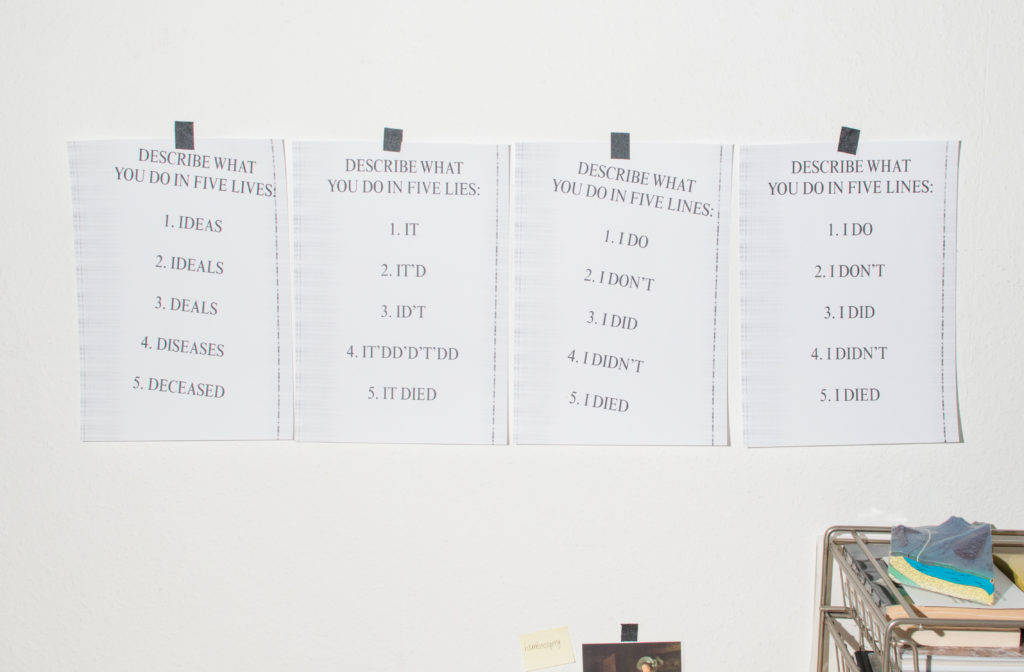
From two large, black speakers Hanne’s clear voice repeated her words. The stanzas in the work ‘Bag’ appeared like disturbing variations over the previously mentioned positivity.
“I do not enjoy sports, although I know it is good for me. I do not enjoy any juice of any colour, although I know it is good for me.
I do not enjoy fresh air, although I know it is good for me.
I tell myself everyday that life is precious in order to believe in it.
I am a private person.
I am a public mind.
I read labels excessively, even if it is only a package of salt.”
Playing over her voice was the ‘Xylophone’ ringtone, from the then newest iPhone model. Every now and again, one could hear her swallow. Or stumble a bit while speaking.
HL: I haven’t cut it yet.
Hanne explained.
HL: There are still two days until the opening. But I am wondering if I should keep some of the hesitation.
In the second room at Hanne’s disposal, a big screen was hung from the ceiling. On it the video ‘Attention Spam’ was projected. The video lasts five to six minutes, a length Hanne said she enjoys working with. On it, a young man, dressed in a suit and a tie rushes around with a smartphone in his hands that he cannot take his eyes off. I had seen the actor before in a performance Hanne did at KW Institut in Berlin. That time, he acted as her assistant. During the opening at GfZK he would again perform with her. This time, also, with a continuously ringing phone in his hands.
HL: Lately, I have considered hiring him as a real assistant, so he can take care of my papers and my phone calls, as well.
Hanne laughed.
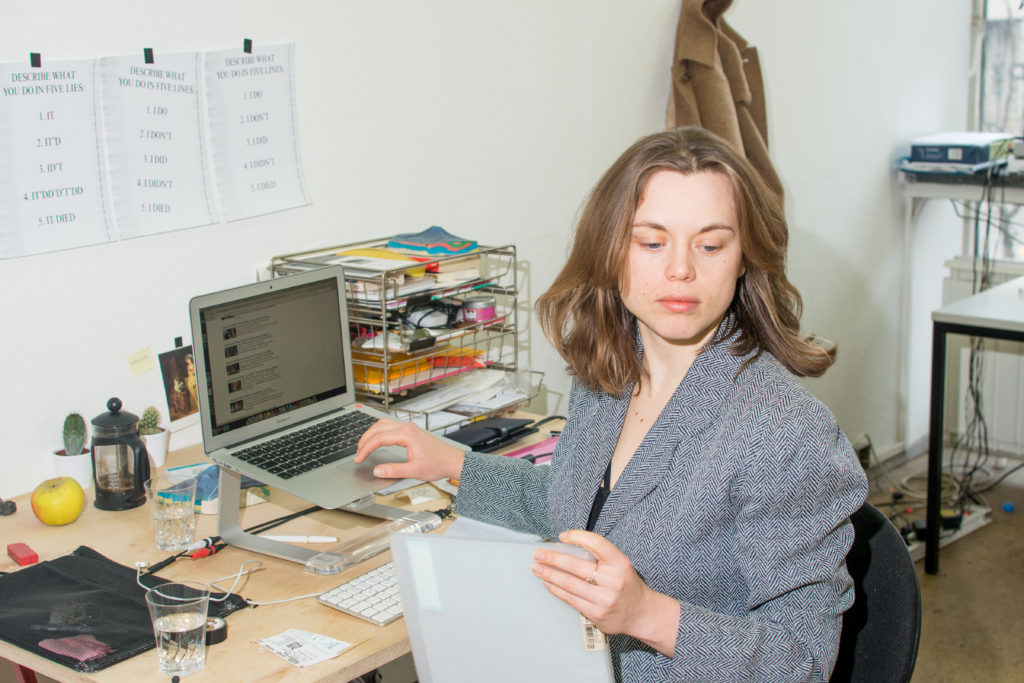
HL: Of the time I spend on work, maybe only 20 per cent goes to actually making work. The rest is communication. One has meetings, Skypes about things, sends e-mails, does research. On busy days, I keep checking my phone all the time, when I get home, as well. It’s as if I cannot unwind. We live in an ASAP-culture, where through social media one also builds avatars of oneself. I have a Facebook avatar. And then I have the artist Hanne Lippard, with her own homepage.
When Hanne stands before an audience, she appears like she does in her sound pieces — calm. She prefers to call what she does readings, rather than performance and argues that she works less actively with her surroundings than many other performance artists. Even when she is surrounded by electrical fans, office plants, confused assistants — the attention is drawn towards her. I confronted Hanne about her voice having an almost seductive effect on her audience.
HL: The seductive part is quite interesting. It is still an unsolved mystery to me, but I notice that it is some form of a weapon, a power. Weapon and power might be negative, hard and masculine words… But maybe I choose these masculine words because I have been so introverted for so long. As a teenager, I was shy and I used theater to express a different part of myself. But the roles you are given in theater are very specific, and I am not interested in building up a character with a specific age or background. In my work, I have more of an alter ego, that needs neither costume nor change. It is not necessarily so easy for me to say what I want to say in everyday situations. Very often I am told to speak louder.

Inger Wold Lund: I recognize what you say from my own work, and often experience that people pay more attention to me because I am not loud. They come closer, and not just physically.
HL: You and I can not get away from the fact that when we work with our own voices they are female voices. I think that fact makes what we do seem more intimate. One can use this as a tool to achieve what one wants. I am interested in Sue Tompkins’ work. She has a small, frail voice, and in her performances she reads from a music stand. It is always the same set up. She stands there, rocking back-and-forth, while she performs her monologues. She almost sings, but it is not exactly song. It’s more like a rap, but then she is a white woman from Northern England. I recognize myself in taking a step in one direction, but not completing the step.
Despite my work bordering theater, poetry, typography and song, I stick to the arts. And in doing so, I know that it is still different than doing painting or sculpture. There will always be questions asked of work that finds itself in a border space, and in many ways that is also good. That means I cannot just stand at an assembly-line producing.
Hanne has often been grouped together with Karl Holmqvist in exhibitions and festivals. He also works in the borderland where art meets poetry, and he also combines typographic work, objects, video and voice.
HL: In Holmqvist’s work there is a lot of focus on making the language personal. His own personality penetrates his work. He has a very special character, and when one reads something by him on the wall, it’s like one hears his voice. I find that very fascinating, and I think that also happens with my work. People have said of the book Nuances of No, which I published with Broken Dimanche Press in 2013, that they hear the rhythm of my voice in their head when they read. It is exciting to reverse the relation between speech and printed matter in that way — one can turn the effect of moving words to paper back to words being sound again.
IWL: Could you imagine working even closer to the literary field?
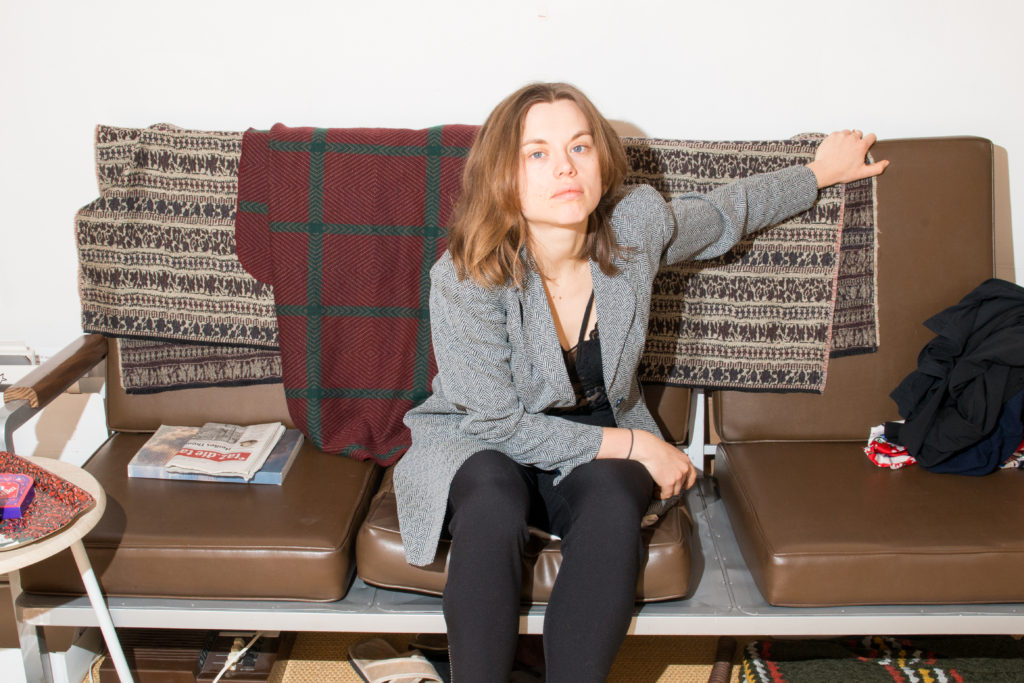
HL: For me, the voice will always be there. If I move away from using the voice, I will feel some of the tactility also disappearing. When I worked with graphic design, the importance of the paper was significant, and made me a bit crazy. It was like if I had to ask myself all the time, ‘why should I use just this paper and not the other one?’ I got caught up in details, and that is not my way of working. For me the work that I do is more about a feeling, and that is probably why the live element is also important. There is a lot of calculation in the arts, but there has to be room for the sensory and for what can not be explained, as well. My material is both emotional and intuitive.
Hanne and I left the gallery together, and headed to eat lunch at the café in the same building. The room was filled with sound. Coffee grinders grinding. Other guests talking loudly. Babies screaming. I checked whether my sound recorder could separate our voices from the voices around us, and then turned it off as we ate. Hanne soon had to leave to make some final adjustments with the technicians. I had to get ready for my train back to Berlin. After the meal we were both tired.
HL: I feel like the robot HAL 9000 from 2001: A Space Odyssey (1968). When his batteries uncharge, he speaks slower and slower. That being said, it is interesting how one today increasingly sees oneself as a machine. I believe we have also started thinking more like machines. Franco ‘Bifo’ Berardi wrote in his book The Uprising: On Poetry and Finance (2012) that the generation growing up now learn more words from the machine than from their mother. I do not have a wide theoretical background, but I am concerned with how Marshall McLuhan also writes about media as “extensions of man.” The voice is an extension. It can also be seen as technology. I have more than once been asked to do voiceovers for movies, but the times I have said yes it has ended with the customer asking for something motoric or generic. Earlier on, I have also worked as the voice of ‘Female One’ in the Norwegian version of the language education program Babbel.
Hanne changed her pitch of speaking and quoted some lines from the program with careful diction.
“I have picked up grandmother today.”
“Really? What did she want?”
When I asked Hanne whether she would be interested in doing more of her own work in her native Norwegian, as well, she changed back to her normal voice.
HL: Of course, it would be interesting to work in Norwegian. Specifically, since the English language has something strangely artificial about it. But I moved away from Norway at 19 [years old], and when one moves at such a young age, one becomes estranged from both the culture and the country. I have done performance work at UKS and at Bergen Kunsthall, but in many ways that is not so different from work I have done in Prague. I am rarely spoken about as a Norwegian artist, but that can also have to do with me writing in English. I also have a not very Norwegian-sounding last name, and an English place of birth.
I quickly asked Hanne a last question, before she again scooted off to work, and I ran to catch my train home.

IWL: Whats next?
HL: The exhibition I open on the outskirts of Zürich, Autofoffice is about the automatic replies one gets from people who are not at work. When I did my graduation exhibition some years ago, a graphic designer I know received an inquiry from a student wanting to intern at his studio. As so many others in our field, my colleague was broke, slept on his sister’s sofa and had no actual physical studio, even though he was well-known for his work. He did not know how to reply, and I offered to do so for him. I prepared a sound work to be recorded accompanied by a piano. While I was working on the piece, I lost my voice waiting for him at a subway station in Stockholm in minus-20 degrees, and instead of having a pleasant and formal voice when recording, my voice was shrill.
It was the opposite of what I have become known to work with. How should I put it — my voice was very uncomfortable. I sounded like a secretary that was clearly unfit for picking up the phone. The work I am showing in Zürich is a continuation of this project. In the gallery there will also be blinds that automatically drop before the piece is played. Like a visual sign that one is ‘autofoffice.’ The blinds fall with a clumsy movement — too far down — as they hit office plants and other objects. They do in some way perform a mechanical ‘tschüß.’
I stopped the sound recorder after Hanne had said this German word for ‘goodbye.’ She mumbled something about a dream of herself being “autofoffice,” before we walked off in different directions.
Partly machine and partly human. Partly voice and partly silence. Partly artist and partly something else that we both have difficulties putting our fingers on.**
